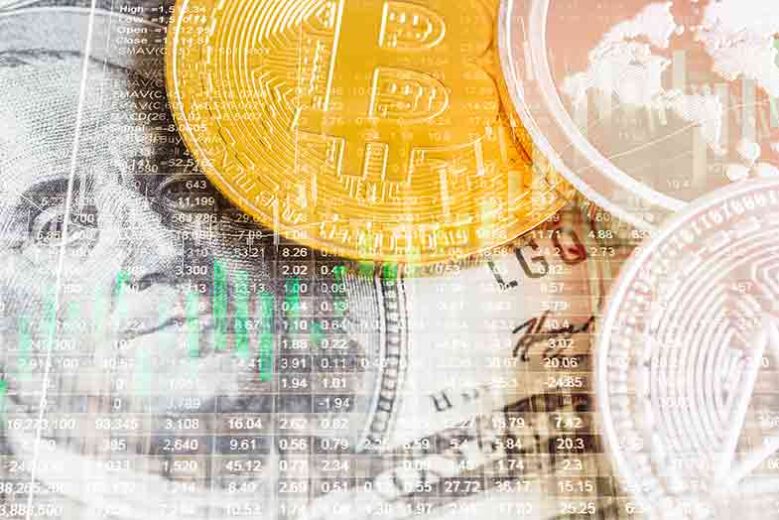The concept of money has changed throughout history and is now evolving toward the use of digital currencies. As we know from our history lessons early trade was facilitated not by money as we know it today, but rather by barter. The use of the barter system had limitations though, as there had to exist a need or want by both parties to exchange goods. Barter overtime evolved to where the use livestock or other comedies became the dominate currency of trade as they both possessed utility and created a form of stored value.
Barter based solely on the exchange of goods eventually gave way the introduction of coins used as a monetary mode of exchange. Coins as currency solved the issue of intrinsic value as metals had alternative uses if melted down. Fast forward a bit and the utilization of paper currency was introduced.
Paper currency struggled at first as it lacked intrinsic value notwithstanding the fact it might be exchanged for coins that possessed intrinsic value. Another problem related to the use of paper currency as money was the ease in creation verse the minting of coins. It wasn’t until paper money received backing, such as the later stage development of the gold standard that paper currency began to flourish.
Today many argue that money, while physical in some respects such as bank notes and coins, is really comprised primarily as numbers on ledgers located within banks. And thus, most money today is already digital in nature.
The current digitization of money is supported by the wide-spread adoption of fractional reserve banking that allows for the fact that most money in circulation does not actually physically exist within a bank. The fractional reserve system is based on the trust that banks can and will meet demands for physical cash when called upon to do so. Hence, banks only hold a portion of their aggregate deposits in physical cash while maintaining an accurate electronic ledger for each customer tallying their total individual deposit relationship.
So, what is the next evolutionary step in money? Many feel it is the rise of crypto currencies. One only must look at the daily headlines regarding Bitcoin and other flavors of crypto to understand the evolution of digital currencies is unfolding real time in front of our collective eyes.
The proponents of Bitcoin cheer it has the potential to become the dominate global currency due in part to inherit advantages that sovereign currencies lack. While others weigh in on the side that Bitcoin possesses some of the problems of early currencies namely a lack of in intrinsic value. Bitcoin detractors also point to the anonymous accounts or wallets that house crypto currencies, which many users appreciate, while many others including governmental authorities clamor for additional transparency.
Irrespective of where you fall with respect to championing digital currencies, one cannot deny the fact they are forcing the evolution of money and have caught the attention of central banks around the world.
Central bank digital currencies (CBDC’s) are fundamentally different from Bitcoin and other currently-available cryptocurrencies. For one thing, CBDCs are traditional money just in digital form, both issued and controlled by the country’s central bank. Bitcoin has no centralized governing body. Many retailers do not accept cryptocurrencies as payment because they are not considered “legal tender” by many – but CBDCs are (will be). The other specific difference is that currently cryptocurrency values are determined primarily by supply and demand found in the market, and CBDCs will be influenced by both the market, and also in a similar fashion as traditional paper money is – by monetary policy, trade policies, general government oversight and overall market conditions.
So, what are the prospects for a digital U.S. dollar issued by our Federal Reserve or central bank? “Federal Reserve Chairman Jerome Powell acknowledged that the central bank is looking into the possibilities of a CBDC. While the Fed hasn’t developed its own digital currency, it is continuing to “carefully analyze the costs and benefits of pursuing such an initiative in the U.S.,” Powell said in a letter to lawmakers in November [2019].”
Incoming Treasury Secretary Janet Yellen while having concerns regarding digital currencies did state “I think it important we consider the benefits of crypto currencies and other digital assets, and the potential they have to improve the efficiency of the financial system.
So where does all this leave us with respect to the evolution of money and acceptance of a digital currency? It is hard to say, but the use of digital currency could arrive quickly. Currently underway is the Digital Dollar Project a partnership between Accenture and the Digital Dollar Foundation formulated in part to advance exploration of a United States Central Bank Digital Currency (CBDC). If this partnership gains traction perhaps it will provide an avenue to a dollar CBDC and continue the evolutionary path of money.

